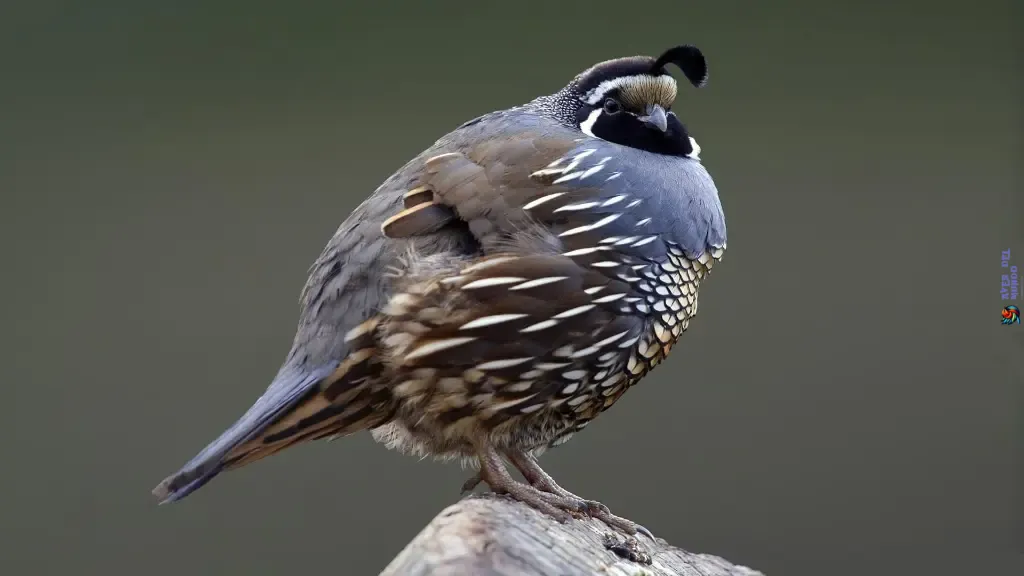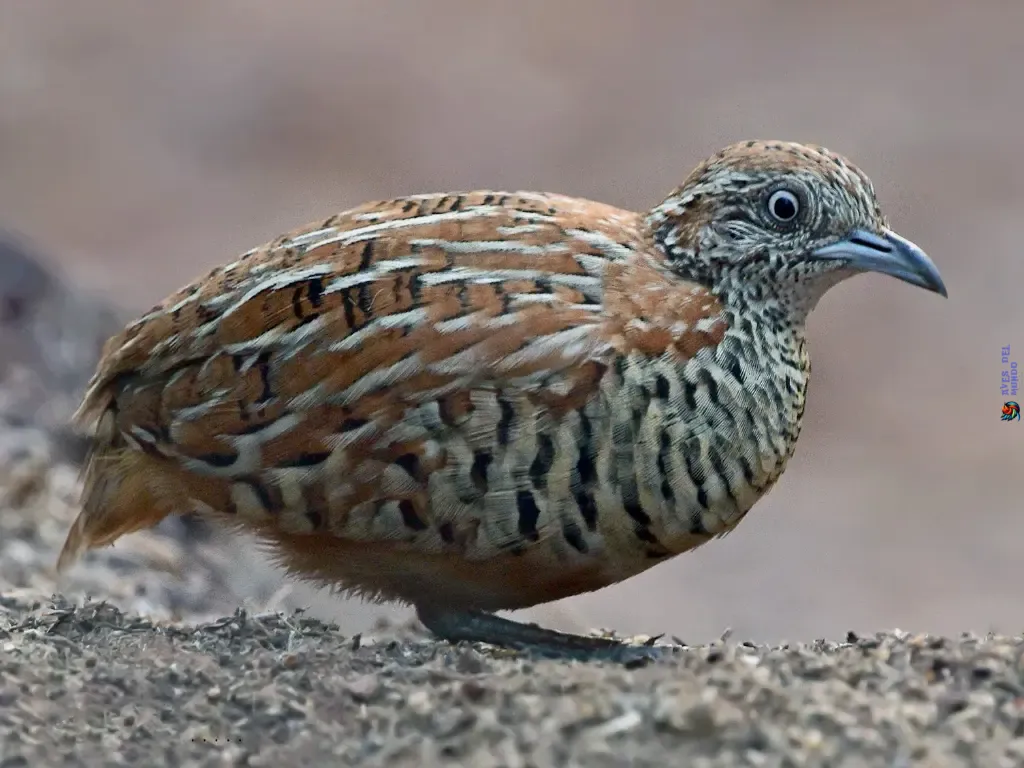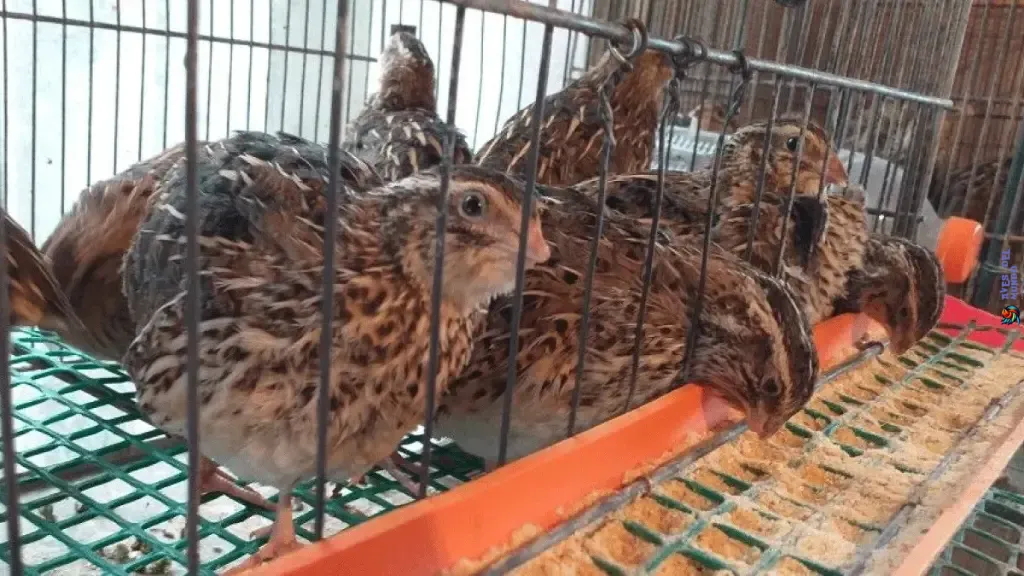Did you know that quails are incredibly adaptable birds, capable of thriving in various environments and climates? These small, intriguing creatures have captured the attention of bird enthusiasts and homemakers alike, thanks to their low maintenance requirements and unique characteristics.
In this comprehensive guide, you will learn all the essential tips for caring for quails, explore different quail breeds, and discover how to create the perfect habitat for raising healthy quails at home.

Whether you’re interested in raising quails for their eggs, companionship, or even as a culinary delight, this guide will equip you with the knowledge and confidence to embark on a rewarding quail-keeping journey.
So, let’s dive in and unlock the secrets to successful quail care, breeding, and habitat creation!
Quail Care
Welcome to the world of quail care! In this section, we’ll dive into the basics of keeping and raising quails, covering important aspects such as feeding, housing, and ensuring their overall well-being. Let’s get started!
Feeding Your Quails
Feeding your quails a balanced diet is crucial for their health and productivity. They require a combination of commercial quail feed and fresh foods to thrive. A high-quality game bird feed formulated specifically for quails is an excellent foundation for their diet. It’s essential to provide a constant supply of fresh, clean water to keep your quails hydrated.
Housing and Enclosure
The housing and enclosure for your quails should be spacious, comfortable, and secure. A well-designed quail coop or aviary will protect them from predators and extreme weather conditions. Consider the number of quails you plan to keep and provide enough space for each bird to move around freely. Remember to maintain proper ventilation to prevent respiratory issues.
Adequate Water Supply
Quails require access to clean water at all times. These small birds have a high metabolic rate, and dehydration can quickly become a problem. Provide water sources such as shallow dishes or nipple waterers that are easily accessible for the quails. Regularly check and clean the water containers to ensure hygiene and prevent the growth of harmful bacteria.
Did You Know? Quails love to take dust baths to keep their feathers clean and free from parasites. Consider providing a shallow tray or container filled with fine sand or diatomaceous earth in their enclosure for this purpose!
Ensuring Health and Well-being
Regular health checks are essential to catch any signs of illness or disease early. Keep an eye out for physical abnormalities, changes in behavior, or a drop in egg production. Consult a veterinarian experienced in avian care for routine check-ups and any concerns you may have regarding your quails’ health. Implement a proper biosecurity plan to prevent the introduction and spread of diseases in your quail population.
In Summary
Proper quail care involves providing a balanced diet, a comfortable and secure housing environment, and regular health check-ups. By following these fundamental care guidelines, you ensure the well-being of your quails and set the stage for a successful and rewarding experience in raising these remarkable birds.
Exploring Different Quail Breeds
When it comes to raising quails, it’s important to choose the right breed that suits your specific needs and preferences. With a variety of quail breeds available, each comes with its own unique characteristics and attributes. Whether you are looking for quails for meat production, egg-laying, or simply as pets, understanding the different breeds can help you make an informed decision. Let’s take a closer look at some popular quail breeds:
Coturnix Quail (Coturnix)

The Coturnix quail, also known as Japanese quail, is one of the most common and beloved quail breeds. These small and versatile birds are known for their rapid growth and efficient egg production. With a gentle and docile temperament, Coturnix quails are relatively easy to handle, making them suitable for beginners. They are also available in various attractive colors, adding aesthetic appeal to your quail flock.
Bobwhite Quail (Colinus virginianus)

The Bobwhite quail is a native North American species widely recognized for its distinct call and charming appearance. These small game birds are popular among hunting enthusiasts and are often bred for restocking purposes in hunting preserves. Bobwhite quails are relatively hardy and can thrive in various climates. Known for their strong parental instincts, they make excellent brooding quails.
Gambel’s Quail (Callipepla gambelii)

Native to the southwestern United States, Gambel’s quail is a strikingly beautiful breed that stands out with its unique plumage. These quails are known for their social nature and often form coveys, making them a great choice for those looking to raise quails in groups. Gambel’s quails are adaptable and can be raised in both aviaries and outdoor enclosures.
California Quail (Callipepla californica)

The California quail, also referred to as Valley quail, is a popular breed known for its elegant appearance and distinct topknot feathers. These quails are native to the western United States and are adaptable to a range of environments. California quails have a sociable nature and can cohabitate with other bird species, making them an excellent choice for mixed aviaries.
While these are just a few examples of the many quail breeds available, each breed offers something unique, from egg-laying capabilities to different temperaments and color variations. Consider your specific goals and requirements as you explore the different quail breeds to find the perfect fit for your quail-raising endeavors.
| Breed | Characteristics | Best For |
|---|---|---|
| Coturnix Quail | Rapid growth, efficient egg production, docile temperament | Egg production, meat |
| Bobwhite Quail | Strong parental instincts, suitable for hunting preservation | Hunting, restocking |
| Gambel’s Quail | Social nature, adaptable to various environments | Group raising, aviaries |
| California Quail | Elegant appearance, sociable, compatible with other bird species | Mixed aviaries |
Creating the Ideal Quail Habitat

When it comes to raising quails, providing them with a suitable habitat is crucial for their well-being and overall happiness. Designing the perfect quail habitat involves considering various elements that will ensure a comfortable and safe environment for your birds.
First and foremost, quails require adequate shelter to protect them from harsh weather conditions and predators. A well-built coop or aviary with sturdy walls and a secure roof will provide the necessary protection for your quails.
In addition to shelter, it’s essential to provide nesting areas where quails can lay their eggs comfortably. This can be achieved by incorporating nesting boxes or areas with appropriate bedding materials. A quiet and secluded spot will encourage your quails to lay eggs and ensure their reproductive health.
Outdoor space is equally important for quails, as it allows them to engage in natural behaviors such as foraging and dust bathing. A spacious outdoor enclosure with secure fencing will give your quails the freedom to explore and move around while keeping them safe from potential predators.
Ensuring proper ventilation within the quail habitat is also crucial to maintain good air quality and prevent respiratory issues. Installing vents or mesh panels in strategic locations will promote airflow and regulate temperature within the habitat.
Cleaning and Maintenance
To provide a healthy and hygienic habitat for your quails, regular cleaning and maintenance are essential. Keep the coop or aviary clean by removing droppings, replacing bedding materials, and regularly disinfecting the space. This will help prevent the spread of diseases and parasites, ensuring the overall well-being of your quails.
Quail-Friendly Features
Quails are social birds, and providing them with enriching features in their habitat can contribute to their overall happiness. Consider adding perches, dust bathing areas, and simple toys to keep your quails entertained and engaged.
Creating the ideal quail habitat involves careful planning and attention to detail. By incorporating the necessary elements, such as shelter, nesting areas, outdoor space, and enriching features, you can ensure a comfortable and safe environment for your quails to thrive.
Understanding Quail Diets
Providing a nutritious diet is essential for the health and well-being of your quails. A balanced diet not only promotes their overall well-being but also plays a vital role in optimizing egg production. Understanding the dietary needs of your quails will enable you to meet their nutritional requirements and ensure their vitality.

Quail Care Essentials: Feeding Tips
When it comes to quail care, paying attention to their diet is crucial. These small birds have specific dietary requirements that should be met for their optimum health. Here are some essential tips for feeding your quails:
- Offer a high-quality commercial quail feed as the foundation of their diet. Look for specially formulated feeds that meet the nutritional needs of quails.
- Supplement their feed with fresh fruits and vegetables, such as leafy greens, carrots, and berries, to provide additional vitamins and minerals.
- Ensure a constant supply of clean, fresh water to prevent dehydration and promote digestion.
- Offer additional protein sources, such as mealworms or insects, to support their growth and egg production.
- Include grit or small rocks in their diet to help with digestion in their gizzard.
It’s important to monitor your quails’ body condition and adjust their diet as needed. Remember to provide a clean feeding area and remove any spoiled or uneaten food promptly to maintain their health.
Common Foods for Quails
| Food | Nutritional Benefits |
|---|---|
| Commercial quail feed | Provides essential nutrients and balanced nutrition |
| Leafy greens (spinach, kale) | Rich in vitamins and minerals |
| Fruits (berries, apples, melons) | Contains antioxidants and natural sugars |
| Carrots | High in beta-carotene, promoting good vision |
| Mealworms and insects | Excellent sources of protein |
Remember to consult a poultry nutritionist or veterinarian for specific dietary recommendations based on the age, breed, and individual needs of your quails. By providing a well-rounded diet, you can ensure the health and happiness of your feathered friends, while also enhancing their egg-laying potential.
Breeding and Incubating Quail Eggs
If you’re interested in expanding your quail population or simply want to experience the fascinating process of incubating quail eggs, this section is for you. Breeding and incubating quail eggs can be a rewarding endeavor that allows you to witness the miracle of life firsthand. In this section, we’ll walk you through the essential steps to ensure a successful hatch and raise healthy quails.

1. Selecting Fertile Quail Eggs
The first step in breeding quails is to obtain fertile eggs from your quail flock or trusted breeders. Look for eggs that are clean, well-formed, and of appropriate size. Avoid any cracked or misshapen eggs, as they are less likely to hatch successfully.
2. Creating the Ideal Incubation Environment
Proper environmental conditions are crucial for the successful incubation of quail eggs. Maintain consistent temperature and humidity levels in your incubator throughout the incubation period. The specific requirements may vary depending on the quail species, but typically, a temperature of around 99.5°F (37.5°C) and humidity ranging from 45% to 55% is recommended.
3. Incubation Duration
The incubation period for quail eggs is relatively short, usually ranging from 16 to 23 days, depending on the quail breed. Monitor the development of the eggs closely and make sure to turn them gently at least three times a day to prevent the embryos from sticking to the shell.
4. Hatching
As the incubation period nears its end, you may notice signs of hatching, such as pipping (small cracks in the eggshell). At this stage, it is important to resist the temptation to assist the chicks in hatching as this can cause harm. The chicks need to fully emerge from the shell on their own to strengthen their muscles and prepare for life outside the egg.
Once the chicks have hatched, it is crucial to provide them with a warm and safe brooding environment. Ensure they have access to clean water, proper nutrition, and appropriate shelter to thrive.
Now that you have a basic understanding of breeding and incubating quail eggs, you can embark on this exciting journey. Remember to always prioritize the well-being of your quails and provide them with the care they need to grow into healthy adults.
Quail Farming: Tips for Success
If you’re considering quail farming on a larger scale, this section offers valuable insights and tips for running a successful quail farm. From breeding programs to marketing strategies, you’ll learn key considerations to maximize your output and ensure a thriving quail farming business.
1. Developing a Strong Breeding Program
A successful quail farm starts with a well-planned breeding program. Establish a diverse gene pool by selecting healthy and high-performing quails as breeders. Monitor their reproductive performance and carefully manage breeding pairs to maintain genetic diversity and productivity.
2. Proper Housing and Infrastructure
The housing and infrastructure on your quail farm play a crucial role in the birds’ health and productivity. Provide well-ventilated and spacious enclosures to prevent overcrowding and minimize stress. Ensure adequate lighting and temperature control to create optimal conditions for quail growth and egg production.
3. Feeding and Nutrition
Proper nutrition is essential for the well-being of your quails. Develop a balanced diet that meets their specific nutritional requirements at each life stage. Consider consulting with a poultry nutrition expert to formulate feed that promotes healthy growth, reproductive efficiency, and overall bird health.
4. Disease Prevention and Biosecurity
Diseases can have a significant impact on the success of your quail farm. Implement strict biosecurity measures to prevent the introduction and spread of diseases. Regularly monitor and maintain the cleanliness of the farm and equipment. Consult with a veterinarian to design a vaccination program and establish protocols for disease prevention and control.
5. Effective Marketing Strategies
To ensure the profitability of your quail farm, you must have effective marketing strategies in place. Identify your target market and develop a compelling brand that highlights the value of your quail products. Establish partnerships with local restaurants, grocery stores, and farmers’ markets to expand your customer base and increase sales.
With the right approach and attention to detail, quail farming can be a lucrative and rewarding venture. By focusing on breeding programs, proper housing, nutrition, disease prevention, and effective marketing, you can set yourself up for success in the quail farming industry.
Now, let’s delve into the specific techniques and considerations for raising quails in the next section.
| Factors for Successful Quail Farming | Description |
|---|---|
| Breeding Program | Develop a strong breeding program that ensures genetic diversity and productivity. |
| Housing and Infrastructure | Create optimal conditions with well-ventilated and spacious enclosures, proper lighting, and temperature control. |
| Feeding and Nutrition | Provide a balanced diet that meets the nutritional needs of quails at each life stage. |
| Disease Prevention and Biosecurity | Implement strict biosecurity measures and consult with a veterinarian for disease prevention and control. |
| Effective Marketing Strategies | Identify your target market and develop compelling marketing strategies to increase sales. |
The Culinary Delight of Quail Meat
Quail meat is a culinary treasure that offers unique flavors and tenderness, making it a delightful addition to any meal. Whether you’re an adventurous home cook or a professional chef, experimenting with quail meat can elevate your culinary creations to new heights.
The succulent and flavorful nature of quail meat lends itself well to a variety of dishes, from appetizers to main courses. Its delicate texture and rich taste make it a favorite among food enthusiasts who appreciate high-quality ingredients.
When it comes to cooking quail meat, the options are endless. Here are some tantalizing quail recipes to inspire your culinary adventures:
1. Quail Stuffed with Wild Mushrooms
Prepare a delicious stuffing using a medley of wild mushrooms, aromatic herbs, and breadcrumbs. Stuff the quail with the mixture, then roast or grill until the meat is tender and the flavors are beautifully melded together.
2. Grilled Quail Skewers with Citrus Marinade
Marinate quail skewers in a zesty citrus marinade, then grill them to perfection. The combination of tangy citrus flavors with the succulent quail meat creates a burst of freshness that will leave your taste buds craving for more.
3. Quail and Fig Salad
Combine the delicate quail meat with fresh, juicy figs, mixed greens, and a light vinaigrette dressing for a refreshing and elegant salad. The sweet and savory flavor combination in this dish is sure to impress your guests.
4. Quail Ravioli with Sage Butter Sauce
Prepare homemade ravioli filled with a delectable mixture of quail meat, ricotta cheese, and herbs. Serve the ravioli with a velvety sage butter sauce for a truly indulgent dining experience.
5. Pan-Seared Quail with Wine Reduction
Gently sear quail breasts in a hot skillet until the skin is crispy and golden. Deglaze the pan with a delicate wine reduction, creating a luscious sauce that complements the tender quail meat beautifully.
These are just a few examples of the incredible culinary possibilities that quail meat offers. With its delicate flavor and tender texture, quail meat can transform an ordinary meal into an extraordinary culinary experience.
Whether you’re hosting a dinner party or simply enjoying a meal with your loved ones, exploring quail meat in your kitchen will undoubtedly impress and delight.
| Quail Recipe | Description |
|---|---|
| Quail Stuffed with Wild Mushrooms | A succulent quail dish filled with a flavorful stuffing of wild mushrooms, herbs, and breadcrumbs. |
| Grilled Quail Skewers with Citrus Marinade | Tender quail skewers marinated in a zesty citrus sauce and grilled to perfection. |
| Quail and Fig Salad | A refreshing salad combining quail meat, fresh figs, mixed greens, and a light vinaigrette dressing. |
| Quail Ravioli with Sage Butter Sauce | Homemade ravioli filled with a delightful mixture of quail meat, ricotta cheese, and herbs, served with a luscious sage butter sauce. |
| Pan-Seared Quail with Wine Reduction | Quail breasts pan-seared to perfection, served with a rich wine reduction sauce. |
Quail Hunting: Tips and Techniques
If you’re interested in taking your quail hunting experience to the next level, this section provides valuable tips and techniques to enhance your skills. By implementing these strategies, you can increase your chances of a successful hunt and make the most out of your time in the field. From scouting to firearms selection and hunting strategies, here’s what you need to know:
Scouting
Scouting is a crucial part of quail hunting. By familiarizing yourself with the terrain, you can identify potential hotspots and increase your chances of finding quails. Look for dense cover, such as shrubs and thick grass, which provides ideal habitat for quails. Pay attention to feeding areas, water sources, and roosting spots to pinpoint where quails are likely to be located.
Firearms Selection
Choosing the right firearm is essential for quail hunting. Opt for lightweight shotguns with a gauge suitable for quail hunting, such as 20 gauge or 28 gauge. These gauges strike a balance between power and manageability, allowing for accurate shots without excessive recoil. Consider the terrain of your hunting grounds and select an appropriate shotgun barrel length for maneuverability.
Hunting Strategies
Implementing effective hunting strategies can significantly increase your chances of a successful quail hunt. Consider the following techniques:
- Walking and Flushing: This technique involves walking through suitable quail habitat with flushing dogs, which help locate and flush out quails. Keep a steady pace and be alert for the sound of wings as quails take flight.
- Blocking: Blocking is often used in quail hunting to cover a larger area. Position yourself at a strategic location and let other hunters push quails towards you. This technique can be particularly effective in areas with dense cover and limited visibility.
- Calling: Quail calls can attract quails and encourage them to move closer. Use a quail call to mimic their distinct vocalizations, increasing your chances of encounters. Practice using quail calls before heading out to the field to ensure you can produce realistic and convincing sounds.
Remember to always prioritize safety during your quail hunting expeditions. Familiarize yourself with local hunting regulations, wear appropriate safety gear, and practice safe firearm handling at all times.
| Tip | Technique |
|---|---|
| 1 | Scout areas with dense cover to locate quail hotspots. |
| 2 | Choose a shotgun gauge suitable for quail hunting, such as 20 or 28 gauge. |
| 3 | Practice different hunting techniques, such as walking and flushing, blocking, and calling, to find what works best for you. |
| 4 | Prioritize safety by familiarizing yourself with hunting regulations and practicing safe firearm handling. |
Commercial Quail Farms: A Closer Look
If you’re intrigued by the world of quail farming and are considering setting up your own commercial quail farm, this section will provide you with valuable insights into the inner workings of these operations. Discover the key aspects of running a successful commercial quail farm, from selecting the right breeds to implementing effective farm management practices.
Commercial Quail Breeds
When it comes to commercial quail farms, choosing the right breeds is essential for maximizing productivity and profitability. Some popular commercial quail breeds include:
| Breed | Characteristics |
|---|---|
| Coturnix Quail | High egg-laying capacity, rapid growth rate |
| Bobwhite Quail | Flavorful meat, excellent for hunting preserves |
| Gambel’s Quail | Disease resistance, adaptable to different climates |
Farm Management Practices
Running a commercial quail farm requires effective management practices to ensure optimal production and overall success. Some key areas to focus on include:
- Feeding and Nutrition: Providing a balanced diet that meets the nutritional needs of quails is crucial for their growth, health, and overall productivity. Consult with a poultry nutritionist to develop a comprehensive feeding program.
- Housing and Facilities: Designing a well-ventilated and spacious housing system is essential to accommodate the quail population and maintain their welfare. Consider implementing automated systems for feeding, watering, and waste management.
- Breeding Strategies: Implementing efficient breeding techniques, such as artificial insemination, can help improve genetic traits and optimize egg production.
- Health Management: Developing a comprehensive health management plan that includes regular vaccinations, disease prevention protocols, and proper sanitation measures is crucial for maintaining a disease-free flock.
Challenges Faced by Quail Farmers
Like any farming venture, commercial quail farms come with their own set of challenges. Understanding and addressing these challenges can contribute to the long-term success of your operation. Some common challenges faced by quail farmers include:
- Disease Prevention: Quail are susceptible to various diseases, so implementing strict biosecurity measures is essential to minimize the risk of infections and outbreaks.
- Market Demand: Ensuring a steady market demand for quail products is crucial for a profitable operation. Conduct market research to understand consumer preferences and establish strong distribution channels.
- Economic Factors: Fluctuating feed costs, labor expenses, and market prices can significantly impact the profitability of your quail farm. Conduct financial analysis and develop strategies to mitigate potential economic risks.
By understanding these challenges and implementing effective strategies, you can overcome obstacles and cultivate a thriving commercial quail farm.
Health and Disease Prevention in Quails
Ensuring the health and well-being of your quails is of utmost importance, as a healthy flock leads to better egg production and overall productivity. By understanding common health issues and implementing preventive measures, you can safeguard your quails’ health and promote their longevity. Regular check-ups, a clean habitat, and a balanced diet are essential components of quail care that contribute to disease prevention.
Common Health Issues in Quails
- Respiratory infections: Quails are susceptible to respiratory infections caused by bacteria, viruses, and fungi. Common symptoms include sneezing, coughing, nasal discharge, and difficulty breathing. Environmental factors such as poor ventilation and dampness can contribute to the development of respiratory infections.
- Parasites: External parasites, such as mites and lice, can infest quails and cause discomfort, skin irritation, and decreased egg production. Internal parasites, such as worms, can also affect quails. Regular monitoring and appropriate treatment can help prevent and control parasite infestations.
- Nutritional deficiencies: Inadequate nutrition can lead to various health issues in quails, such as poor growth, feather abnormalities, weakened immune system, and reduced egg production. Ensuring a balanced diet rich in protein, vitamins, and minerals is crucial for their overall well-being.
- Egg-related problems: Quails may encounter issues with their eggs, including egg binding (difficulty laying eggs), soft-shelled or thin-shelled eggs, and egg-laying abnormalities. These problems can be caused by nutritional imbalances, stress, or reproductive disorders.
Disease Prevention Strategies
Implementing preventive measures can significantly reduce the risk of diseases and promote the overall health of your quails. Here are some key strategies:
- Clean and hygienic habitat: Maintain a clean and well-ventilated quail enclosure. Regularly clean the bedding, nesting areas, and waterers to prevent the buildup of droppings and bacteria. Provide fresh bedding material and ensure proper airflow to minimize the risk of respiratory infections.
- Sanitary practices: Practice good hygiene while handling quails. Wash your hands thoroughly before and after interacting with the birds to minimize the transmission of pathogens. Use separate equipment and utensils for different flocks to prevent cross-contamination.
- Quarantine new additions: When introducing new quails to your flock, quarantine them for a minimum of three weeks to ensure they are free from any contagious diseases. This step helps prevent the spread of potential infections to the existing quails.
- Proper nutrition: Provide a well-balanced diet that meets the nutritional requirements of quails. Consult with a veterinarian or avian nutritionist to determine the appropriate feed and supplements for your quails’ specific needs. Ensure access to fresh water at all times.
- Veterinary care: Schedule regular check-ups with an avian veterinarian experienced in quail care. Regular health examinations and vaccinations, if recommended by the veterinarian, can help detect and prevent potential health issues before they escalate.
By prioritizing prevention and implementing these strategies, you can promote the health and well-being of your quails, leading to a thriving flock and optimal productivity.
Conclusion
Throughout this comprehensive guide, you have learned valuable insights into quail care, breed selection, habitat creation, and more. By providing optimal care for your quails, you can ensure their health and well-being, as well as enjoy the rewarding experiences that come with raising these unique birds at home.
When it comes to quail care, understanding the basics is crucial. From feeding them a balanced diet to providing suitable housing and clean water, you have the knowledge to create a nurturing environment for your quails.
Additionally, exploring different quail breeds has given you the opportunity to choose the ones that best suit your needs and preferences. Whether you prefer Coturnix quails or Bobwhite quails, each breed has its own unique qualities that contribute to the overall diverse and fascinating world of quail rearing.
Creating the ideal quail habitat is essential for their comfort and safety. By incorporating shelter, nesting areas, and outdoor space, you have the tools to design a habitat that promotes the well-being and natural behaviors of your quails.
In conclusion, by implementing the knowledge gained in this guide, you are well-prepared to embark on your quail-raising journey. With careful attention to their care, selection of suitable breeds, and the establishment of an ideal habitat, you can create a fulfilling and successful experience of raising quails at home.



